Many Detained Protesters In Iran On Hunger Strike
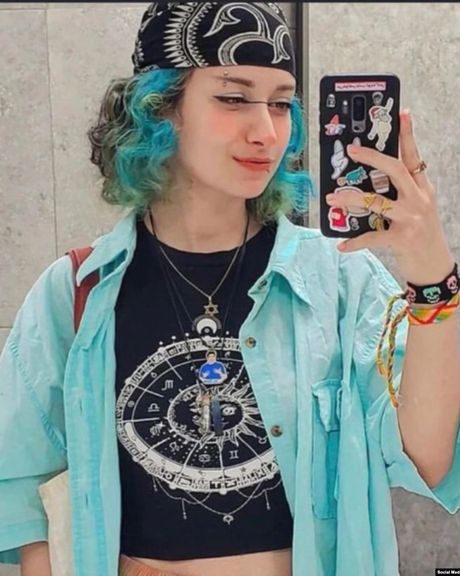
Amid increasing pressure on imprisoned protestors, the wave of hunger strikes in Iranian prisons is on the rise with the detainees’ health in danger.

Amid increasing pressure on imprisoned protestors, the wave of hunger strikes in Iranian prisons is on the rise with the detainees’ health in danger.
Mohammad Reza Azhar, an 18-year-old teenager, who was arrested in the religious city of Mashhad in the northeast on September 22, said in an audio message that the blood vessels of his eyes were torn due to severe mental pressure.
Meanwhile, Armita Abbasi, and over a dozen other prisoners in Kachouie prison of Karaj, west of Tehran, have gone on hunger strike since Monday to protest the lack of attention to their indefinite detention, lack of access to lawyers and the danger of harsh verdicts.
Jasmin Haj Mirza Mohammadi, a 25-year-old citizen, who was sentenced to five years in prison has also refused to eat anything since Monday.
Hamideh Zarei, suffering from anemia and low blood pressure, is also on strike while her move is extremely dangerous for her health.
Another prisoner close to her said Hamideh was severely beaten while being arrested, adding that her court was held on December 29 through video call as she was not allowed to choose a lawyer.
On the other hand, reports say Farshid Nowrozi, an English literature professor at Mazandaran University, has been expelled for supporting protesting students.
However, the authorities of the Islamic Republic are still denying the bloody suppression of the protests. On Tuesday, Masoud Satayshi, the judiciary spokesman, called numerous reports about sexual harassment and rape of imprisoned women "lies”, saying no documents have been presented in this regard so far.

The Islamic Republic has framed several Iranian athletes saying they were planning a terrorist bombing in a case full of contradictory remarks by the officials.
Security organs have arrested at least five athletes – all hailing from the city of Shiraz – on charges of being involved in a "bombing" plot, which the agents of the Islamic Republic claim to have foiled.
The five were arrested in a period of about one month from late October to November 2022 in different cities. Iran International’s Maryam Moqaddam says at least 10 people were implicated in the case but only the names of five of them were released to the media. Snowboard instructors Dena Sheibani and Arsalan Mahdavi, climbing instructor Hesam Mousavi, former national team mountain biker Eshragh (Eshraq) Najafabadi, and mountaineer Mohammad Khiveh are the five detained on charges of planning the bombing.
As is the new normal for the detentions in Iran, the authorities also extracted confessions from them under duress. There are some unconfirmed reports that Sheibani and Khiveh were released on bail.
Their case had been full of conflicting statements since the beginning. Even the place of the alleged bombing is not yet known. On October 28, the authorities announced that they arrested someone carrying “a bag of explosives with strong destruction power” who wanted to plant a bomb in Shiraz’s Ma'aliabad neighborhood.
A deputy for political and security issues of Fars province’s governor earlier rejected reports of “the bombing” saying that no bomb was planted and explosives such as TNT were not involved. Someone with a package that contained “flammable liquids and some accessories" was arrested in the neighborhood, he claimed.
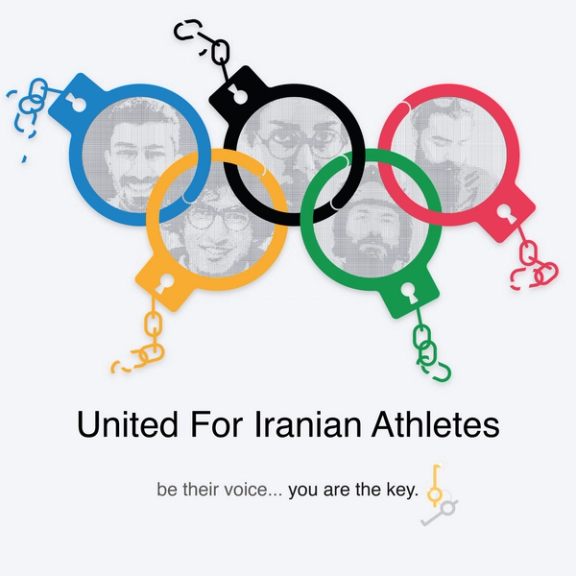
In a video of forced confessions, the climbing instructor Mousavi said that the bombing was planned to take place outside the governor’s office, which is more than a two-hour walk to the Ma'aliabad neighborhood. In the videos, Dena Shibani, the only woman accused in this case, was introduced as the "publicity officer responsible for advertising and testing operations" without providing further details about her role.
However, on December 1, some state media reported a different story of the alleged "bombing" saying that a “suspicious package” was “neutralized” by the bomb squad. In videos published by the state media, some officers seem to be removing small plastic bags of something supposed to be explosives from a small bucket.
The real reason for arresting so many sports people is not even clear, but the indications of extracting forces confessions and contradictory statements by officials clearly show an attempt to frame the detainees.
The arrests occurred only a few days after Iran’s intelligence ministry had announced the arrest of 26 people including foreigners on charges related to an attack on a Shia shrine October 26 that killed 15 people. The ministry said in a statement that these people were detained in different provinces as well as “at the eastern borders while fleeing the country.”
The ministry identified the assailant in Shahcheragh shrine as a Tajik citizen named Sobhan Komrooni with the nickname “Abu Aisha” and an Afghan person named Mohammed Ramez Rashidi as the “supporting element” of the operation. ISIS took responsibility for the attack on the Shahcheragh in Shiraz on October 26, but some questioned the Islamic Republic’s account saying it was staged by the regime itself to distract attention from nationwide protests.

On the third death anniversary of ex-IRGC commander Qassem Soleimani’s death, people in different parts of Iran burned his statues and posters, including in his hometown.
Videos received by Iran International show people setting fire to Soleimani’s banners and posters in Tehran, Karaj, Zarinshahr, Rafsanjan, and his hometown Kerman.
The Islamic Republic through its propaganda tries to show Soleimani as a national hero, but many people believe he was guilty of war crimes against civilians in Syria and spreading violence in the region.
On January 3, 2020, the US military, on the order of President Donald Trump, killed Soleimani in a drone strike near Baghdad International Airport, saying that he had been "actively developing plans to attack American diplomats and service members in Iraq and throughout the region."
In a Monday statement, the Iranian regime claimed that Washington conducted the killing of Soleimani with "false claims and pretexts, including under the guise of counter-terrorism" and in "naked violation of the tenets and principles of international law."
Iranian Foreign Minister Hossein Amir-Abdollahian said on Sunday that nearly 60 US officials have been blacklisted by Tehran for their involvement in the assassination of Soleimani.
The US State Department told Iran International that Washington protects its citizens against possible retaliatory measures by the Islamic Republic.
At the same time, global efforts are underway to place the Revolutionary Guards in the list of terrorist organizations. The UK and Germany are set to announce the designation of the IRGC in the near future.
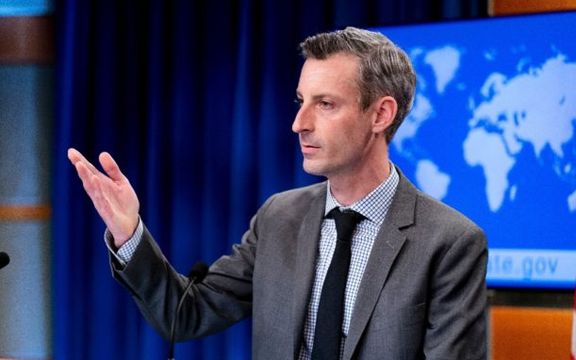
US State Department said Tuesday that nuclear talks with Iran remain dormant and although diplomacy is the preferred approach, other options remain on the table.
Spokesperson Ned Price said the United States has not observed any change from the Iranian side to warrant a resumption of negotiations to revive the 2015 nuclear accord known as the JCPOA. The Biden administration’s 18-month-long diplomatic effort to reach agreement with Tehran arrived at a deadlock in early September.
"We continue to believe that diplomacy is the best way to achieve that goal, but we’ve always been clear we’re not going to remove options from the table, and we’re going to discuss all options with our partners, including, of course, Israel," Price asserted.
Israeli leaders have repeatedly said that they will use any means for stopping Iran from obtaining nuclear weapons.
“The point we’ve made is that the Iranians killed the opportunity for a swift return to mutual compliance with the JCPOA,” he said referring to what the US in September called “extraneous” demands by Tehran.
He also repeated earlier assertions that the Biden administration’s focus is no longer on the nuclear talks, but on the twin issues of protests in Iran and Tehran’s supply of kamikaze drones to Russia, which have been used by hundreds to attack Ukraine’s civilian infrastructure.
“Since September especially, our focus has been on standing up…for the fundamental freedoms of the Iranian people and countering Iran’s deepening military partnership with Russia and its support for Russia’s war in Ukraine,” Price maintained.
Asked if the US has discussed the issue of stopping Iran from supplying UAVs to Russia with Israel, which in the past has been able to sabotage Iran’s nuclear plants, Price said: We have absolutely had discussions with our Israeli partners regarding the threat presented by Iranian UAV technology and the proliferation of Iranian UAV technology to countries around the world, including to Russia.
The Biden administration has been quick in starting discussion with the new Israeli right-wing government headed by Benjamin Netanyahu, a staunch opponent of the JCPOA. Secretary of State Antony Blinken held discussion with the new Israeli foreign minister Elie Cohen in recent days. He told new Israeli Foreign Minister Eli Cohen in a 40-minute phone-call that the JCPOA was finished, and that the US wanted the European Union to step up sanctions against Iran.
Blinken’s reported statement about JCPOA being “finished” echoed President Joe Biden’s remark during an election stomp in early November, when he was heard in a video saying the JCPOA “is dead.”
Biden's remark was welcomed by Israel's former government members who took credit for the failure of the talks. In a tweet on December 20, former prime minister Neftali Bennett said, “Great achievement by our government! Quietly, and through a series of diplomatic and other wise actions, we managed to stop the return to the nuclear deal without confronting the United States.”
Price was also asked during his Tuesday briefing if the administration will support a possible Iranian opposition coalition against the Islamic Republic.
He evaded a direct answer, saying, “first and foremost this is a question for the people of Iran, how or if they want to organize themselves.” But he went on to praise the anti-regime protest movement which “has been sparked and in many ways carried by the women and girls of Iran, but also the fact that it has been organic, it has crossed ethnic lines, it has crossed geographic lines inside of Iran, and it has in a sense been leaderless. That has allowed these protesters to continue and to persist with their efforts in ways that previous movements in Iran have not been able to.”
Price also reaffirmed US support for the movement. “It is our role and responsibility to support their freedom of expression, their freedom of assembly, every single other universal right and freedom that belongs to the Iranian people.”
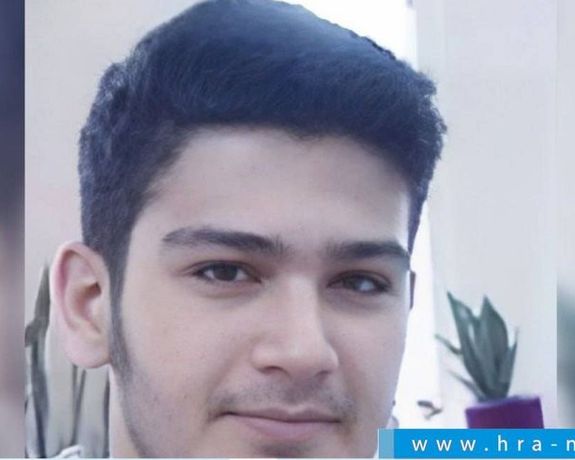
Human right activists say another young Iranian, who was detained during nationwide protests, has received the death sentence on vague political charges.
The US-based Human Rights Activists News Agency HRANA reported Tuesday that Arshia Takdastan, 18, arrested in Nowshahr, has been sentenced to death by a Revolutionary Court in the northern city of Sari in Mazandaran province.
The charges that have led to the death sentence are “enmity with God” and “Corruption on earth,” both vague principles in Islamic law that the regime uses to issue death sentences. Some clerics have challenged the government for using these charges against dissidents.
He has also been sentenced to six years of prison on charges of “disrupting security and inciting people to kill each other”, as well as “propaganda against the institution”. He must also serve two years in prison for “insulting the Supreme Leader”.
According to this report, his accusations are related to the protests held on September 21 in Nowshahr.
HRANA quoted an informed person as saying that “the court issued its verdict based on an accusation that he threw a bottle and a stone at a police car."
The same court on Monday sentenced another 18-year-old protester Mehdi (Shayan) Mohammadifard, to double death.
HRANA said the political prisoner was deprived of the right to have a lawyer and in the absence of his chosen solicitor, the court accused him of "directing and planning" the protest rally on September 21 in Nowshahr.
An informed source close to Mohammadifard's family said, “all the confessions by the defendant during the interrogation were obtained under duress.”

Islamic Republic’s Supreme Leader Ali Khamenei used to be revered by some and feared by some other Iranians but now he is constantly ridiculed and reviled by many people.
Recently, French satirical magazine Charlie Hebdo has launched an international competition -- called "Mullahs Get Out" -- to produce caricatures of Khamenei, as a “symbol of backward-looking, narrow-minded, intolerant religious power.”
On Tuesday, French daily Le Monde published one of the cartoons, saying that Charlie Hebdo is publishing a special issue on the occasion of the eighth-year anniversary of the Paris terrorist attacks, mocking Khamenei in support of the protests in Iran. Charlie Hebdo has been the target of three terrorist attacks: in 2011, 2015, and 2020. All of them were presumed to be in response to a number of cartoons that it published controversially depicting Islam’s Prophet Muhammad. In the 2015 attack, 12 people were killed.
“The freedom to which every human being aspires is incompatible with the archaism of religious thought and with submission to every supposedly spiritual authority, of which Ali Khamenei is the most deplorable example,” Charlie Hebdo wrote.
On Wednesday, Foreign Minister Hossein Amir-Abdollahian censured the controversial French magazine Charlie Hebdo for publishing caricatures of Khamenei, warning of an “effective and decisive response.” The satirical magazine recently launched an international competition -- called "Mullahs Get Out" -- to produce caricatures of Khamenei, as a “symbol of backward-looking, narrow-minded, intolerant religious power.”

As part of the special "January 7" issue, commemorating the anniversary of the 2015 Charlie Hebdo attack, the satirical weekly chose to support Iranian men and women and to "beat the mullahs," Le Monde said, adding that the paper was able to view 35 drawings selected from the 300 sent to the Charlie Hebdo editorial office, including from Iran, Turkey, the United States, Senegal and Australia.
The magazine advised that a cartoon of Khamenei should be the "funniest and meanest" possible, noting that "Cartoonists and caricaturists have a duty to help support Iranians in their struggle as they fight for their freedom, by ridiculing this religious leader who represents the past and casting him into history’s garbage bin.”
“One cartoon shows Khamenei being punched with the slogan 'Women, Life, Freedom,' while another depicts a mullah being crushed under a heel. Among the very political drawings, the supreme leader is also depicted as Marilyn Monroe, whose dress is lifted by the wind of the headscarves that women have freed themselves from. In another, armed with stones, they pommel him,” Le Monde described some of the works.
Since the beginning of the current wave of protests in mid-September, Charlie Hebdo also published other cartoons of Khamenei, one of which prompted the Islamic Republic’s Foreign Ministry to summon the French chargé d'affaires in Tehran. In the cartoon, Khamenei is depicted with bloody hands and a turban and an attire with the logo of clothing manufacturing company Nike and its motto: Just Do It.
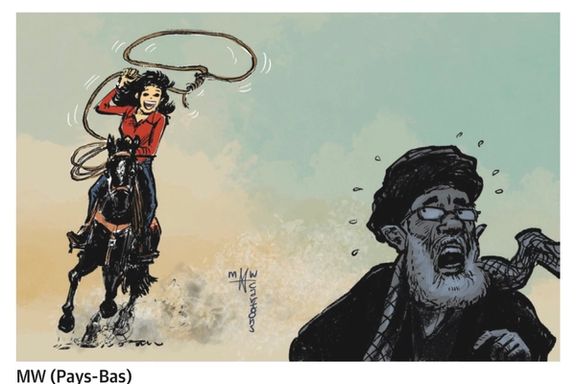
The landscape of Iranians’ protests against the regime has never been this openly full of insults and slogans against the country’s ruler. Chanting “Death to the Dictator” and “Death to Khamenei” was still a taboo until very recently even during the protests. But now, making fun of the authorities and even the dead ones – which is extremely frowned upon in Iranian society – has become a common way of protests.
In December, a famous Iranian actor lashed out at Khamenei saying at least try to be a “personable dictator”. He compared Khamenei with other dictators such as Francisco Franco, Mao Zedong, Joseph Stalin and Benito Mussolini, saying he is “mentally ill” just like his “colleagues”.
January 3 marks the death anniversary of the commander of IRGC’s Quds (Qods) Force -- a division primarily responsible for extraterritorial military and clandestine operations. He was one the most revered figures of the Islamic regime and was killed in a drone strike ordered by former President Donald Trump. His body was so mutilated in the explosion that many social media users described him as a “Cutlet” after his death, an Iranian dish resembling hamburgers mixed with potatoes. Despite extravagant ceremonies to honor his memory, Iranians are burning his banners and statues all over the country and even named January 3 as World Cutlet Day.